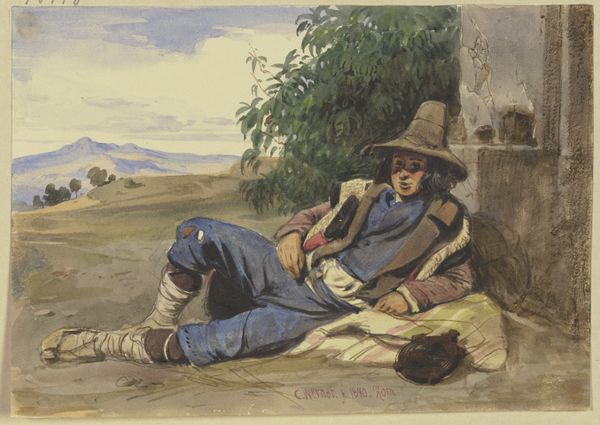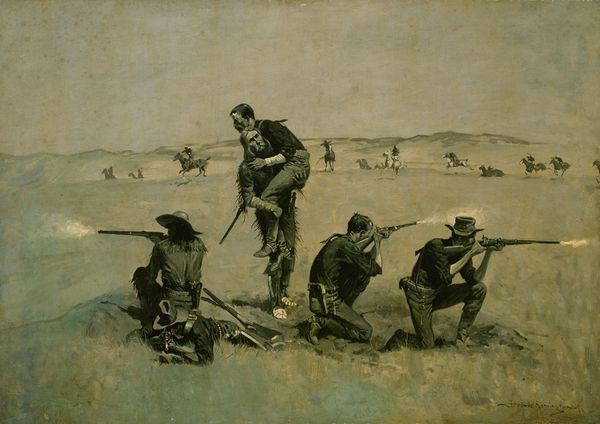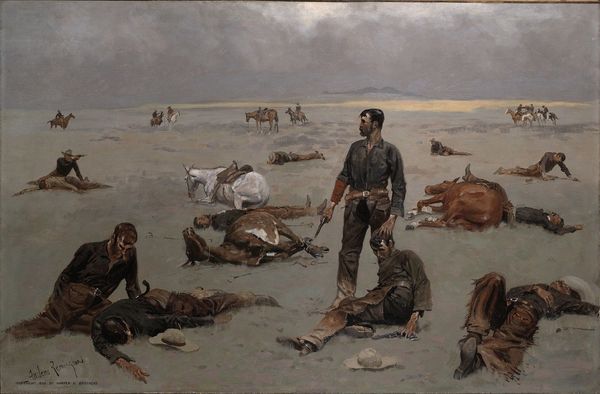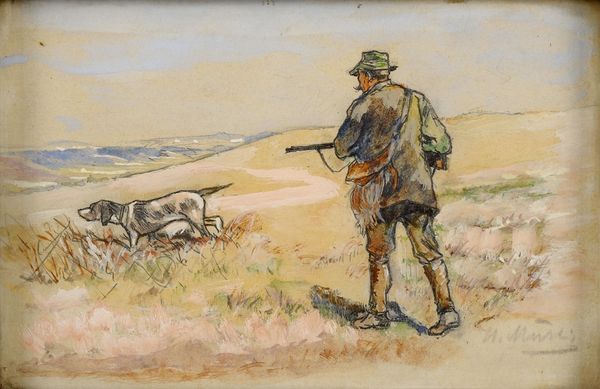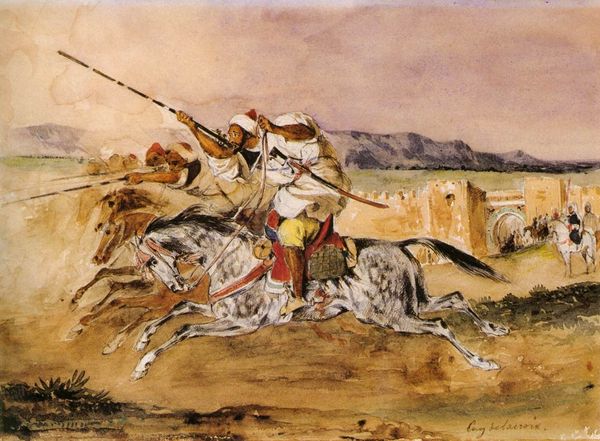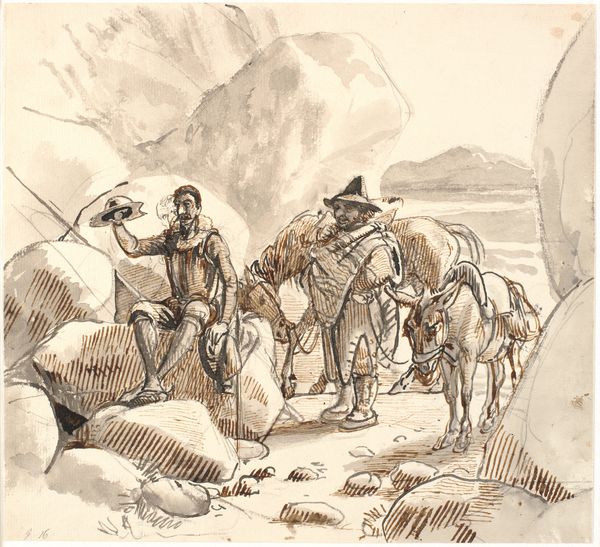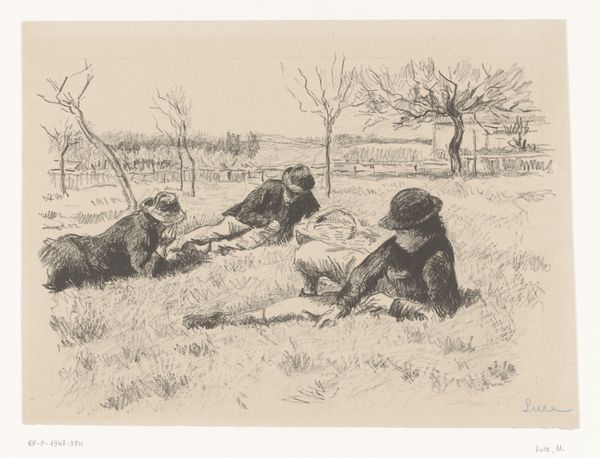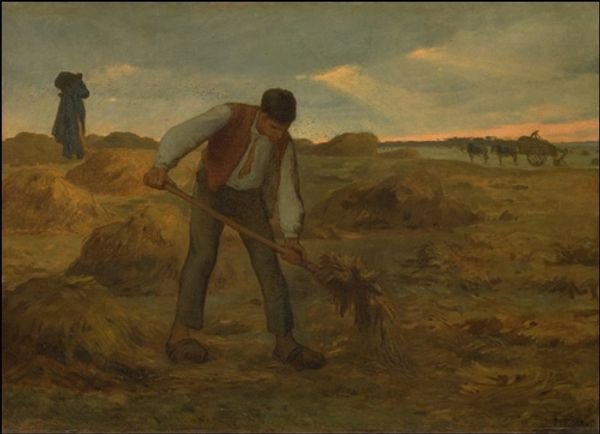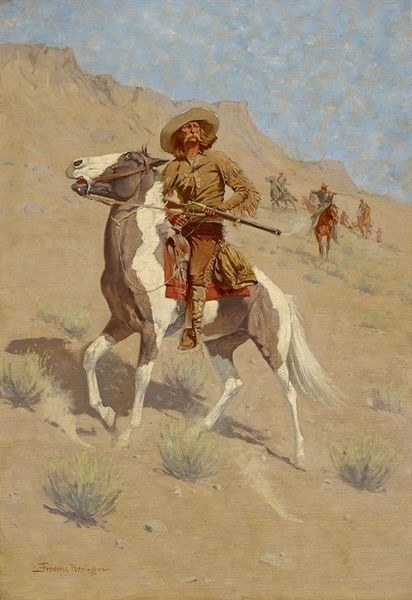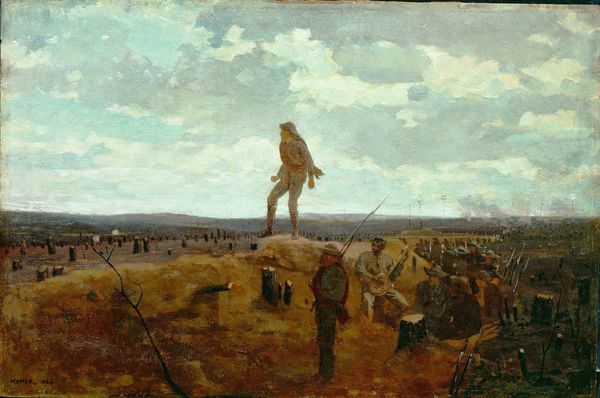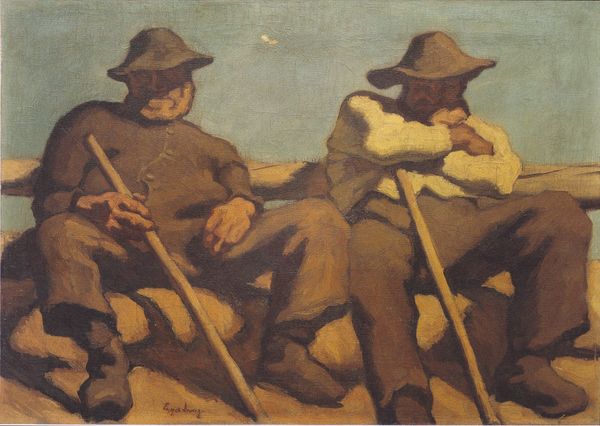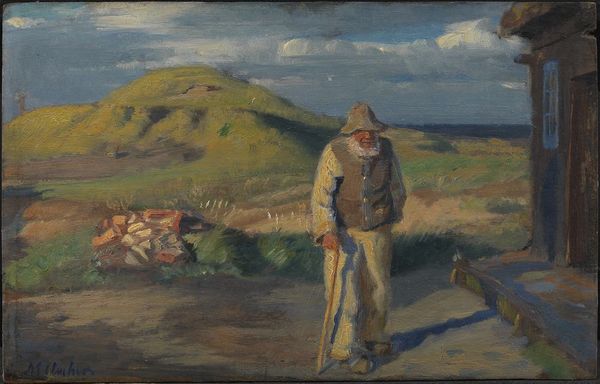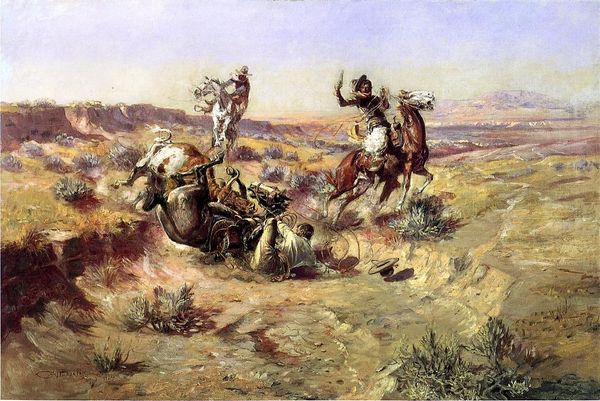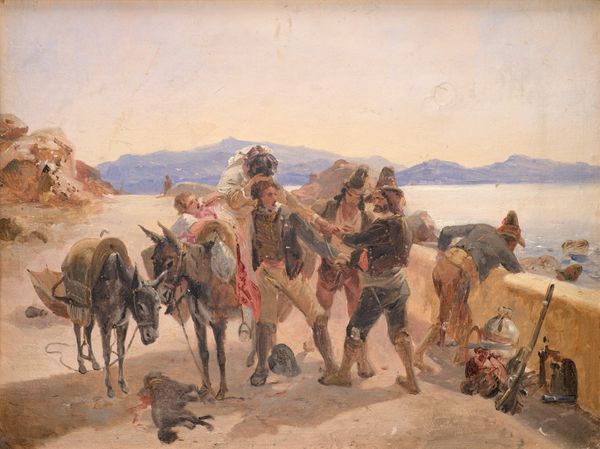
drawing, painting, plein-air, watercolor
#
portrait
#
drawing
#
painting
#
plein-air
#
landscape
#
oil painting
#
watercolor
#
genre-painting
#
watercolor
#
realism
Copyright: Public domain
Editor: We’re looking at George Washington Lambert’s "Burke and Wills on the Way to Mount Hopeless" from 1907, created with oil paint and watercolor. The painting shows these defeated figures with their camels in a dry, ochre landscape. I find this a somber and bleak work. What stands out to you the most when you view this scene? Curator: Ah, a moment frozen in the amber of hardship, isn't it? Lambert captures more than just an expedition gone wrong. See the curve of the seated figure's back, the rigid stance of the standing man... They're carrying the weight of their ambition, literally and figuratively. It whispers of the futility of grand gestures against the indifferent backdrop of the Australian outback. I'm struck by the stark contrast - the supposed glory of exploration versus this agonizing defeat. What do you make of those two crows perched overhead? Editor: The crows add a haunting quality, suggesting scavenging and perhaps impending doom. I see them as symbols of what awaits the explorers. I guess my question is, does the landscape itself play a role beyond being just a backdrop? Curator: Absolutely! This landscape isn’t merely *there*; it's an active participant in their downfall. It’s vast, unforgiving, and ultimately, unconquerable. Lambert has captured this in these subdued tones, in the oppressive horizontality of the composition... Did you notice the bone-white sand mirroring the color of the dead camels? This echoes of a broader truth, you see – the land remains, timeless, while empires of men rise and crumble within it. Editor: That's a powerful connection I hadn't considered. I appreciate how Lambert used both figures and landscape to portray defeat, challenging the heroic narratives that often accompany such expeditions. Curator: Indeed. The romance of adventure, punctured by the sharp reality of dust and death. A beautiful, heartbreaking truth, beautifully, heartbreakingly rendered.
Comments
No comments
Be the first to comment and join the conversation on the ultimate creative platform.
